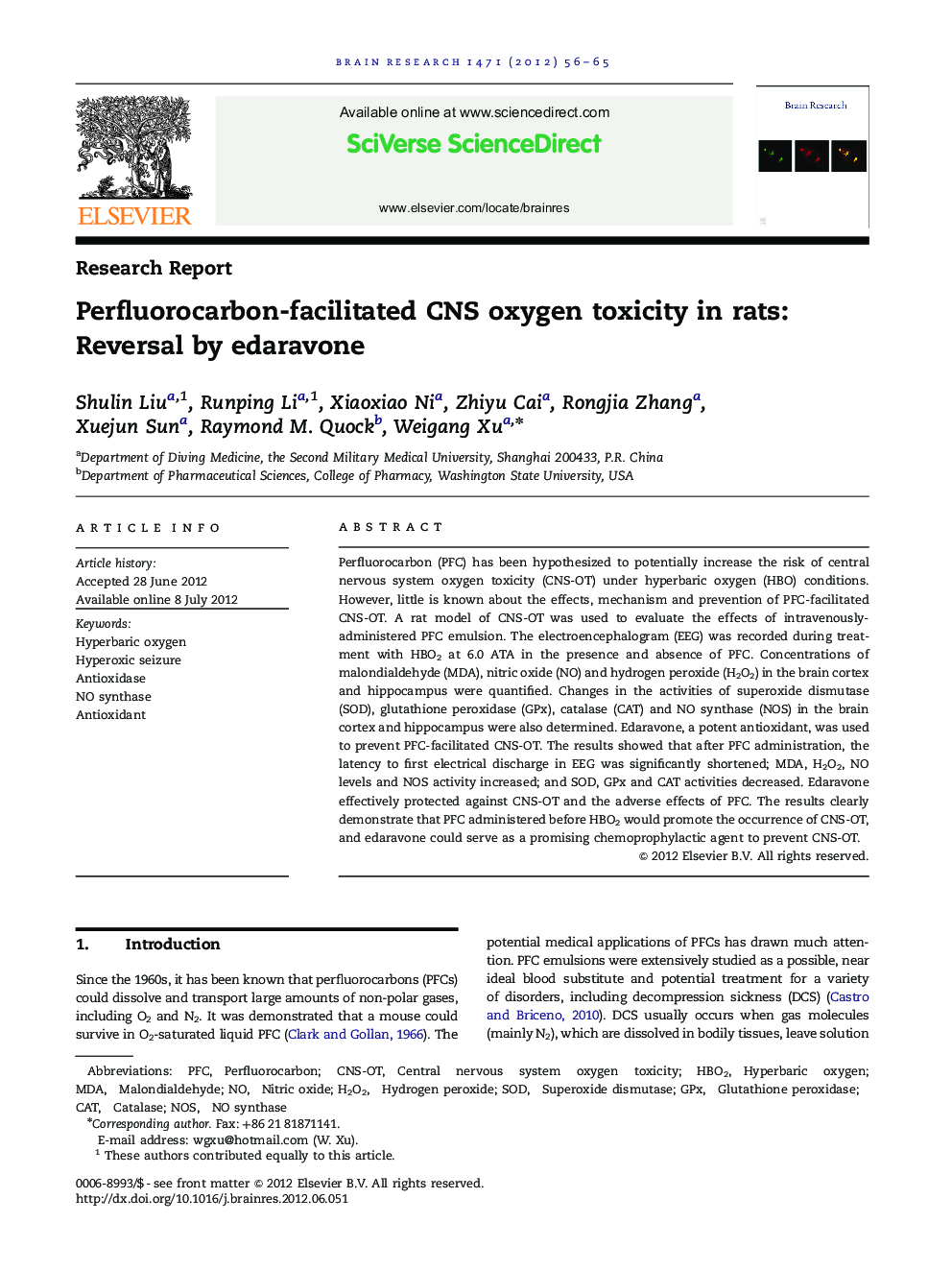| Article ID | Journal | Published Year | Pages | File Type |
|---|---|---|---|---|
| 6264145 | Brain Research | 2012 | 10 Pages |
Perfluorocarbon (PFC) has been hypothesized to potentially increase the risk of central nervous system oxygen toxicity (CNS-OT) under hyperbaric oxygen (HBO) conditions. However, little is known about the effects, mechanism and prevention of PFC-facilitated CNS-OT. A rat model of CNS-OT was used to evaluate the effects of intravenously-administered PFC emulsion. The electroencephalogram (EEG) was recorded during treatment with HBO2 at 6.0 ATA in the presence and absence of PFC. Concentrations of malondialdehyde (MDA), nitric oxide (NO) and hydrogen peroxide (H2O2) in the brain cortex and hippocampus were quantified. Changes in the activities of superoxide dismutase (SOD), glutathione peroxidase (GPx), catalase (CAT) and NO synthase (NOS) in the brain cortex and hippocampus were also determined. Edaravone, a potent antioxidant, was used to prevent PFC-facilitated CNS-OT. The results showed that after PFC administration, the latency to first electrical discharge in EEG was significantly shortened; MDA, H2O2, NO levels and NOS activity increased; and SOD, GPx and CAT activities decreased. Edaravone effectively protected against CNS-OT and the adverse effects of PFC. The results clearly demonstrate that PFC administered before HBO2 would promote the occurrence of CNS-OT, and edaravone could serve as a promising chemoprophylactic agent to prevent CNS-OT.
⺠We evaluate the effects of perfluorocarbon and edaravone on central nervous system oxygen toxicity. ⺠Concentrations of malondialdehyde, nitric oxide and hydrogen peroxide in the brain were quantified. ⺠Changes in the activities of antioxidases and NO synthase in the brain were determined.
